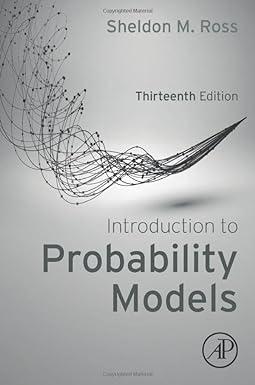A viral linear DNA molecule of length, say, 1 is often known to contain a certain marked
Question:
A viral linear DNA molecule of length, say, 1 is often known to contain a certain
“marked position,” with the exact location of this mark being unknown.
One approach to locating the marked position is to cut the molecule by agents that break it at points chosen according to a Poisson process with rate λ. It is then possible to determine the fragment that contains the marked position. For instance, letting m denote the location on the line of the marked position, then if L1 denotes the last Poisson event time before m (or 0 if there are no Poisson events in [0,m]), and R1 denotes the first Poisson event time after m (or 1 if there are no Poisson events in [m,1]), then it would be learned that the marked position lies between L1 and R1. Find
(a) P{L1 = 0},
(b) P{L1 (c) P{R1 = 1}, (d) P{R1 >x}, m (e) Find E[R −L], and in doing so, show that E[R −L] ∼ 2 nλ .![]()
Step by Step Answer:







